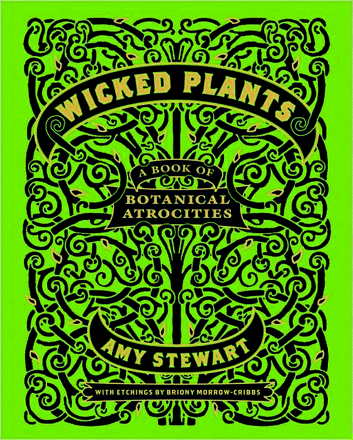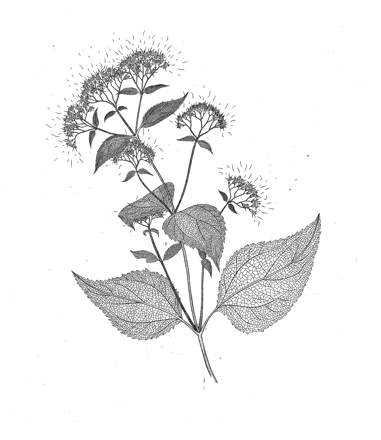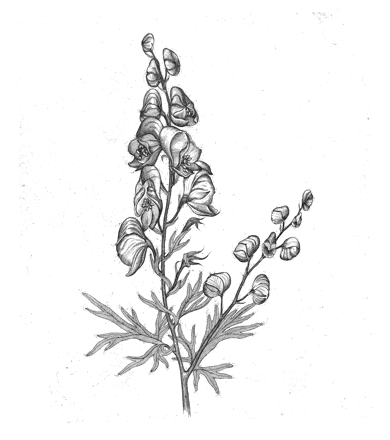Don’t Stop and Smell the Roses
- Dan Collinge, BA

Wicked Plants: The Weed that Killed Lincoln’s Mother & Other Botanical Atrocities. Amy Stewart Algonquin Books: Chapel Hill, NC 236 pages. $18.95, ISBN-13: 978-1565126831
Plants are getting a bad rep these days. Arugula is elitist; corn is trying to take over the world; even cute, cuddly baby spinach leaves come swaddled in E. coli bacteria. And now author Amy Stewart has assembled an A–Z dictionary of wicked plants. Wicked! Why, that’s almost as bad as elitist! In the devilishly titled Wicked Plants: The Weed that Killed Lincoln’s Mother & Other Botanical Atrocities, Stewart cobbles together a darkly amusing guide to some of the nastiest, meanest plants out to ruin a good picnic. Beautifully illustrated and downright hilarious at moments, Wicked Plants, alas, has an identity problem. In fact, I don’t even know what to call it, other than a “book.” It’s part field guide, part collection of short stories, and part manifesto. Engaging at times, tiresome at others, this book is best taken in small doses, much like the fruit of the really-and-truly-named suicide tree. [In fairness, the author, who we assume is not wicked herself, does not actually recommend any doses, small or otherwise, of this toxic fruit.]
The book gets its subtitle from white snakeroot, which is indeed the weed that killed Lincoln’s mother, along with a whole lot of other people. The story goes like this: Back in the days of frontier life, horses and cows would occasionally “stagger around until they died,” Stewart tells us. Anyone who drank milk from a sickened cow could also pick up the disease (known as milk sickness), leading to nausea, delirium, and sometimes death. Nancy Hanks Lincoln was among this unfortunate lot. Eventually farmers discovered the cause of the blight—white snakeroot—deadly cousin to the harmless and beautiful Queen Anne’s lace. The plant’s toxin, tremetol, was gobbled down by hungry livestock and passed along in their milk. Fortunately, after discovery, white snakeroot was uprooted from pastures where the animals grazed.
So it goes for most of the entries—anecdote, identification of poisonous plant, explanation of its effects, more anecdotes, related plants, habitat, scientific name, etc. If this sounds dismissive, it’s not meant to be. Many of the entries are highly entertaining, but they do follow a similar template. Take aconite, for example—well, don’t take it, for goodness’ sake—it’ll kill you. This small, blue-flowering shrub, commonly known as monkshood or Wolfsbane, has often been mistaken for an edible herb. Such a mix-up has in more than one instance brought about fatal consequences; none more notorious than the time a cook for a Scottish dinner party mistook aconite for horseradish, added it to the sauce, and “promptly killed two priests,” Stewart recounts with ghoulish delight. In the same entry we also learn that Nazi scientists used the plant to poison bullets. And in popular culture, Professor Snape of the Harry Potter series brews up a batch of it for Remus Lupin to “assist…in his transformation to a werewolf.” So it’s pretty strong stuff, but why? Stewart’s done the research and has the science to report: “The poison, an alkaloid called aconitine, paralyzes the nerves, lowers the blood pressure, and eventually stops the heart.” This qualifies it as wicked in my book, too.
Not every wicked plant is deadly, many fall under other section headers—“Painful,” “Intoxicating,” “Dangerous,” “Destructive,” “Offensive,” or “Illegal.” In other words, plants that don’t kill you can still stab you, burrow their way into your flesh, make you sick; they can tear down a building; they can gross you out with the smell of rotting corpses; they can land you in prison. Don’t mess with plants! Actually, the advice given by Stewart is treat plants with respect and don’t make salads from random leaves, or fruits, or berries. (Helpful tips in case you ever find yourself in the nineteenth century or lost in the wild without Bear Grylls to guide you.) One of the more unsettling aspects of the book—and there’s no shortage of unsettling things—is the slight genetic difference between healthy and deadly. For example, “Potatoes, peppers, eggplants, and tomatoes are among the more respectable members of [the nightshade] family,” as in deadly nightshade. Not only that, it turns out mangoes and cashews are related to poison ivy and poison oak, and so they must be prepared carefully and even still might give a rash to someone with severe allergies. And speaking of allergies, Stewart’s got a comical explanation for those as well. She writes, “There’s a reason why seasonal allergies seem to get worse every year. Gardeners and landscapers, in an attempt to be tidy prefer to plant male trees and shrubs…a male tree produces only small, well-behaved flowers—that is, if your definition of well behaved includes spewing plant sperm into the air for weeks on end.”
There is plenty of humor to be found here, to go along with well-researched science, but the book is oddly sectioned. While more famous botanical atrocities (poison hemlock, strychnine tree) get full entries complete with stories and wonderful artwork by Briony Morrow-Cribbs, others are clumped under larger sections with titles like “Lawn of Death,” and “Weeds of Mass Destruction.” In spite of the witty titles, and the droll, if tacky, illustrations by Jonathon Rosen, these sections are frankly a bit dull. They read much more like a reference book than like the story-laden lengthier entries they follow. All of this makes Wicked Plants somewhat of a mishmash or maybe an entertaining mess. The book has a genre problem. It reads too much like a field guide to be completely engaging for the casual reader, but it’s too casual to be used as a serious field guide. It’s hard to peg the audience it was written for—Botanists? Gardeners? Concerned parents? (There is a list of poison gardens in the appendix but a phone number for a poison control center in the introduction.) Or is this meant to be a small coffee table book for plant enthusiasts?
The book is, above all else, pretty—from the ornate cover to the brownish, faux-faded pages (like fake wood paneling for a book!) to the elaborate etchings by Morrow-Cribbs—it’s something to look at. In her blog, Dirt (http://blog.amystewart.com/wicked-plants/), Stewart discusses the artwork for Wicked Plants: “It wasn’t until this project was nearly over that I really stopped to think about how unusual it is to have a book illustrated with original copper etchings. It’s a very old technique that was used to illustrate botanical books in centuries past, but who does that anymore?” Copper engravings do indeed have a long tradition. One of the best-known artists to create copper engravings of plants was Elizabeth Blackwell, whose striking illustrations adorned the 1737 volume A Curious Herbal. Blackwell, however, was not the first to use this technique, which dates back to at least the late sixteenth century. Wicked Plants, therefore, is an homage to an old tradition, no doubt explaining the worn-in shelf appearance.
But aesthetics accounted for, what explains the book’s existence? A bit more from Stewart in her own words: “I didn’t write this book to scare people away from the outdoors,” she writes in her introduction. A few pages later, she adds another disclaimer, “I did not shy away from including plants that intoxicate, but I included them to provide a warning, not an endorsement.” In her blog, she expounds, “I included quite a few illegal plants in Wicked Plants, and I have to say that the idea of outlawing a plant is as odd to me as outlawing a bird or a pebble. It is also surprising to see the number of plants that are perfectly legal, but far more harmful than an illegal plant like cannabis or opium poppy.” If we approach Stewart’s discussion of marijuana in Wicked Plants with this statement in mind, I think we can begin to see her motivations for writing the book. “Cannabis,” she says, “has been used by humans for at least five thousand years and regulated or banned for the last seventy.” There’s more than a hint of protest in this sentence. But rather than a rallying cry for hippies, we can consider this entry, and the whole project for that matter, as a call for the protection and respect of all plants—with the possible exception of invasive species—no matter what harm they may cause. She clarifies her words later in the same blog entry, “Now, what we do with that plant is another matter entirely…
Leave the plant alone, and concentrate on the manufacturers, dealers, and distributors of its extract.” Leave the plant alone; give it a healthy measure of respect; let it do its thing. Yes, it’s true that there is a fascination with the macabre, and the title of the book certainly plays this up, but the wicked plants are treated with awe for their unique and bizarre powers, not as nuisances for humans to avoid or eradicate. It is this love of plants—rendered in the florid (sorry, pun intended) descriptions and in the lush artwork—that makes the book approachable for the novice. It might be the kind of book that will be flipped through or read in sections, rather than in a sitting or two, but while it’s a hard book to categorize, it’s easy enough to enjoy. So go ahead, make yourself an arugula and spinach salad, put the corn on the grill, and settle in to read.
- Copyright © 2009

Dan Collinge, BA, is Senior Editorial Coordinator of Molecular Pharmacology and is currently working on a Master’s degree in English.






